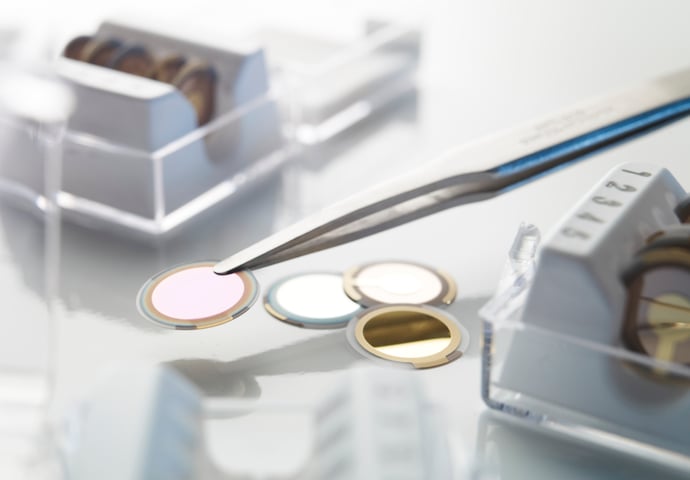
Regenerating used QCM sensors can seem to be a resource efficient way of running experiments. However, we generally do not recommend this approach. In this post, we explain why.
Cleaning used QCM sensors to be able to use them again could be considered a resource efficient approach seemingly saving both time and money. We often get questions on how to remove different types of samples from used sensors to make sure the surface is clean and back to the state it was before it was used in a measurement. Our general answer to this question, however, is that we do not recommend reusing sensors. The reason is that we as suppliers can only guarantee the quality of the sensors when they come directly from us, i.e., when they are new and unused. When you get the sensors from us, we can say that this is a good sensor, we know what’s on top of the surface and so on. But if you have used it once, and then try to remove the sample from the sensor surface, maybe you are not completely successful. There may be some leftovers from the old sample remaining at the surface and you might even change the chemical composition and/or the surface roughness of the sensor. This would mean that in the next experiment, you will not start with the same surface as you had in the previous one. If this is the case, you cannot expect high measurement reproducibility. This aspect is worth emphasizing because sensor regeneration is such a common question.
There might be cases where the measurement reproducibility is not that critical. Perhaps you are only after a yes/no kind of answer. Then reusing the sensor could potentially work for that purpose. However, it is then the responsibility of you as a user to evaluate if the data quality or reproducibility is good enough, we as supplier cannot take responsibility for the result.
If you want to learn more about QCM-D measurement best practice, we share some tips and tricks in the pod episode Collecting quality data with QCM-D – what to consider and pitfalls to avoid.
Compared to QCM, QCM-D measures an additional parameter, and provides more information about the system under study.
Discover how QCM-D analysis reveals real-time etching dynamics, helping optimize cleaning processes and protect surfaces from unwanted damage.
Discover how QSense QCM-D helps tackle fouling challenges across industries
Discover how QCM-D enables real-time, label-free analysis of supported lipid membrane formation, structure, and dynamics for advanced research
Learn how QSense QCM-D analysis can reveal membrane fouling dynamics and optimize cleaning strategies for more efficient water treatment
Learn how QSense QCM-D helps detect and prevent surface-induced instabilities in biologics. Join our webinar for insights and practical examples.
Learn about the top QSense sensors for analyzing biopharmaceutical drug-surface interactions in the context of IV bags.
Learn about QCM-D, Quartz Crystal Microbalance with Dissipation monitoring - an analytical tool for surface interaction studies at the nanoscale.
Explore QSense QCM-D sensors to optimize cleaning efficiency with real-time insights, enhancing formulations and protocols across various conditions.
Jennie Ringberg is a former employee at Biolin Scientific. She was the Global Technical Product Manager for QSense and also held roles as Application Specialist for QSense, In-House Sales Manager, and Academy Manager. Jennie holds a Master of Science in Bioengineering from Chalmers University of Technology and spent the first years after graduation focusing on membrane proteins and how to identify and characterize these in the best way.
